
The Ponies And The People
[caption id="NewForestLife_Feature" align="aligncenter" width="1024"]
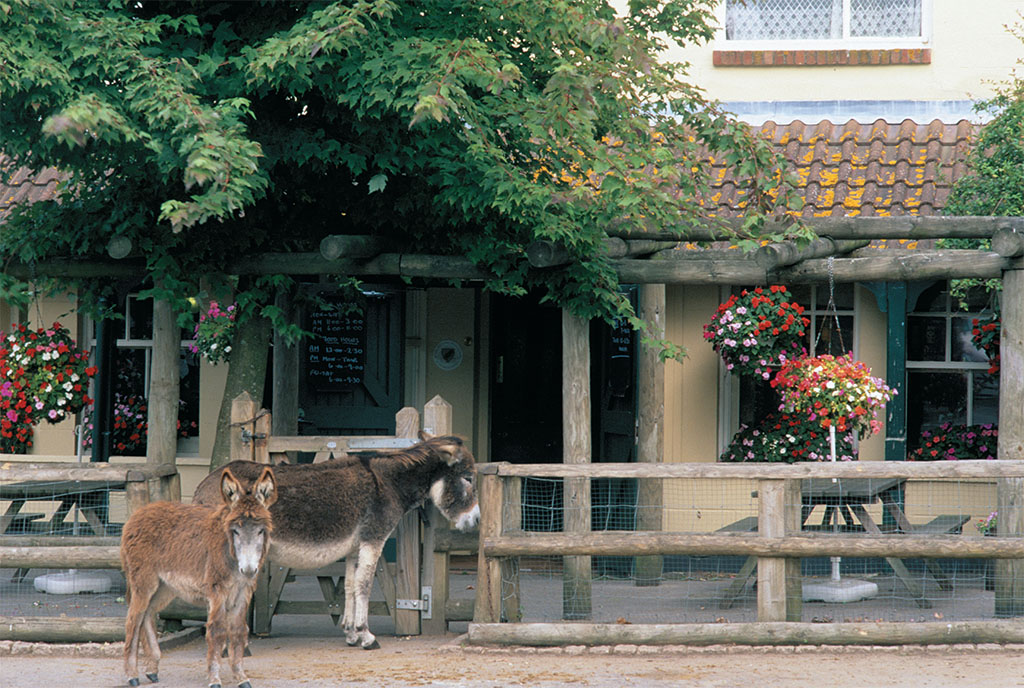
JIM HARGAN
Tucked between The Solent and the chalk downs of Wiltshire, the New Forest forms the southwest corner of Hampshire—a National Park of 140,000 acres
The two ponies grazing around the base of Lyndhurst’s war memorial don’t look too out of place, set against the open common. A first-time visitor may be startled, however, by the cows at the bus stop in Brockenhurst or the donkeys crossing the main road to Beaulieu village green.
[caption id="NewForestLife_img1" align="aligncenter" width="1024"]

REBECCA GARDNER
Although seemingly wild, all the stock of the 140,000-acre New Forest—nearly 4,500 ponies, 2,500 cattle and numerous donkeys, pigs and sheep—are owned by local people. Owning or renting a property with “commoning” rights permits the “pasturing” of animals among the open moorland, ancient forests and even the villages; that’s just one of the rights and responsibilities attached to this ancient system of land management.
[caption id="NewForestLife_img2" align="aligncenter" width="579"]
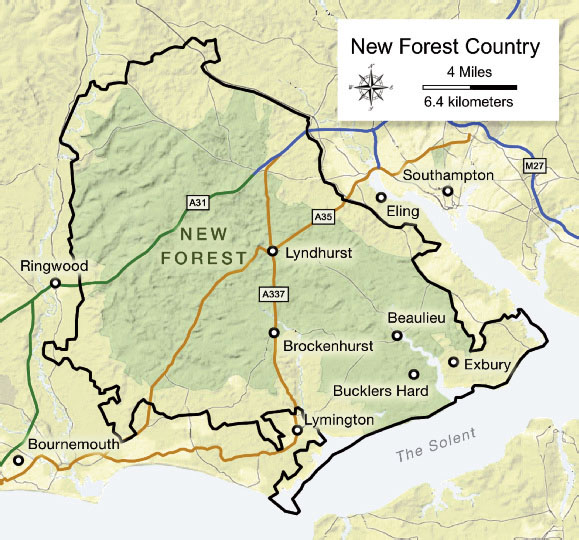
GREGORY PROCH
Commoning is a practice that weaves landscape, animals and social history together in this unusual area. The wandering livestock are elements unique to the New Forest National Park, but it is the people who live and work here that keep the forest heritage alive.
Start your visit in the town of Lyndhurst at the New Forest Centre. You might find yourself talking to a “commoner”—a local with commoning rights. “We have a few commoners on the staff,” says Hilary Marshall, center manager, “although I’m not one myself. They’re a great source of information.” Do remember your New Forest etiquette however. “It’s very bad manners to ask a commoner how many ponies they own,” explains Marshall. “It’s like asking how much money they have.”
William the Conqueror officially named his new hunting ground the “Nova Foresta” in 1079. In the visitor center, the forest’s history is displayed on a stunning embroidered panel, 25 feet long by 2 feet deep, which serves as a detailed timeline. The panel, designed in 1979 by Lady Montagu of Beaulieu and a team of 50 people, finishes with Elizabeth II, planting a tree to celebrate the forest’s 900th anniversary.
Toward the end of the embroidered panels, look out for Alice running through a forest wonderland. Longtime Lyndhurst resident Alice Liddell was the inspiration for Lewis Carroll’s famous character. Carroll, being a Liddell family friend, entertained the children with fantasy stories, one of which was to become his most famous work. After marrying in 1880, Alice lived initially in one of the forest’s great country houses, Cuffnells. Struggling to maintain the house after her husband’s death in 1928, she sold her manuscript of Alice’s Adventures Underground at Sotheby’s, raising the huge sum of £15,400. Her grave is on the grounds of Lyndhurst’s St. Michael and All Angels Church. At the Mad Hatter’s tea room next door, browse through the photos of local events that Alice’s granddaughter attended.
[caption id="NewForestLife_img3" align="aligncenter" width="1024"]
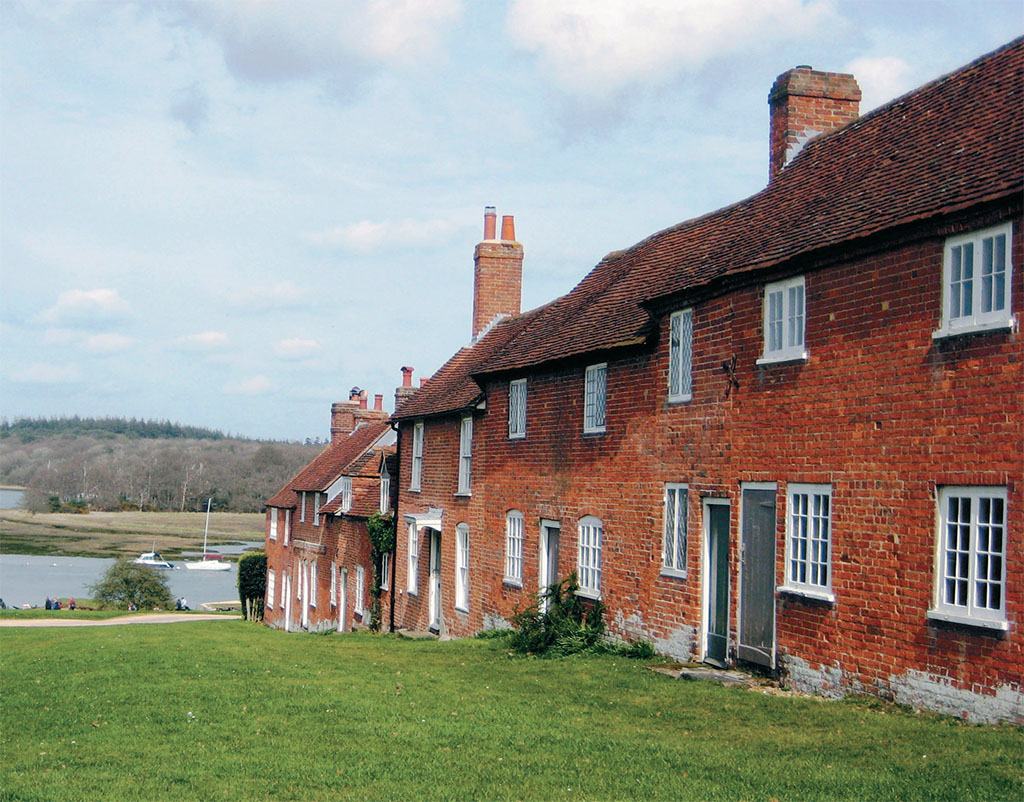
REBECCA GARDNER
Several offices in the forest’s management, held by local people, date back centuries. One such position, that of “Verderer,” has 13th–century origins. The center explains the history of the Court of Verderers—an ancient form of forest government. The 10 Verderers meet monthly in the Verderers Hall in Lyndhurst. From here, they uphold both ancient forest laws and modern regulations from the EU. The hall, open by appointment for tours, includes the wooden dock from which commoners make “presentments” to the court.
The court also employs five “agisters,” another position dating from medieval times. The agisters patrol the forest on horseback in traditional green livery, dealing with animal issues—removing a donkey stuck in a cattle grid or dealing with four-legged traffic victims.
[caption id="NewForestLife_img4" align="aligncenter" width="128"]
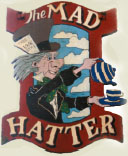
LOOP IMAGES
Agisters are also responsible for the annual “pony drifts,” when on several days in late summer, all the ponies are rounded up. Each pony is “tail marked,” cut in a distinctive pattern for each agister. This marking denotes where the animal’s owner lives and payment of the marking fee. Commoners then release their animals for a further year or keep them to sell.
Grazing in The New Forest
New Forest Centre, Lyndhurst
www.newforestcentre.org.uk
[caption id="NewForestLife_img5" align="alignright" width="1024"]
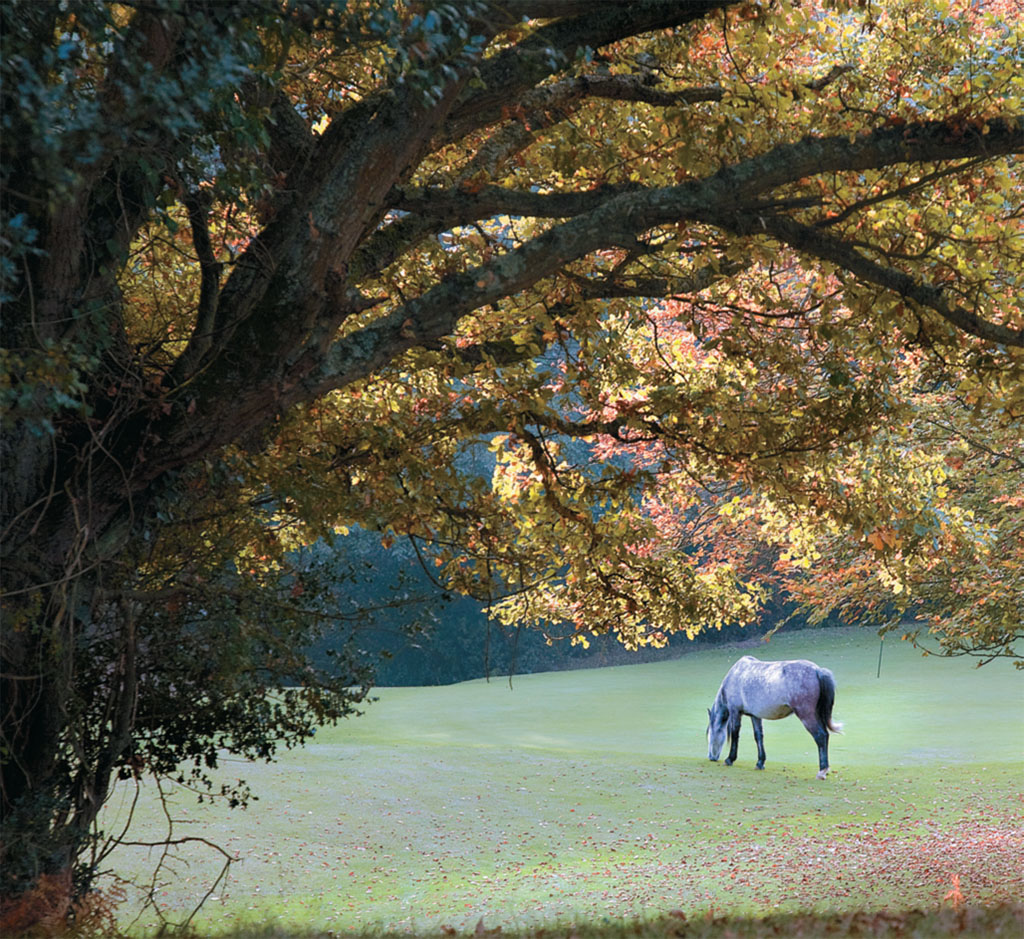
REBECCA GARDNER
Verderer’s Court and Hall
www.verderers.org.uk
Eling Tidal Mill
www.elingexperience.co.uk
Beaulieu Estate
www.beaulieu.co.uk
Bucklers Hard
www.bucklershard.co.uk
Exbury Gardens
www.exbury.co.uk
The Crown Hotel, Lyndhurst
www.crownhotel-lyndhurst.co.uk
The Cloud Hotel and Restaurant, Brockenhurst
www.cloudhotel.co.uk
The Thatched Cottage and Restaurant, Brockenhurst
www.thatched-cottage.co.uk
Beaulieu Hotel, Bartley Lodge Hotel, Moorhill House Hotel and Forest Lodge Hotel
www.newforesthotels.co.uk
Opposite the Verderers Hall is The Crown Hotel, which dates back to the 16th century and a “hall of history” telling many stories. In 1908, King Edward VII visited to welcome the first motor vehicles imported from the United States. The Crown’s brasserie is open to non-residents, even if you don’t arrive by Model T Ford.
Driving with care, head toward Beaulieu, which along with nearby Bucklers Hard on the river really brings together the essence of the New Forest. A visit to the Beaulieu estate, including Lord Montagu’s family home, Palace House, the National Motor Museum and Beaulieu Abbey, is a must. Tickets are valid for six days, and there’s a lot to see. Take time to stroll around Beaulieu village itself—try a New Forest ice cream and join the donkeys by the river.
The Beaulieu estate still maintains a sense of family, despite its size. Explanatory labels in Palace House are written by Lord Montagu, with personal notes such as “… a picture of me as a boy.” Pencil lines by the fireplace mark the heights of the growing family.
As you enter the house, you enter 1889; a polite notice requests cell phones to be silenced. 1889 is the year that the first Lord Montagu kept a diary of all menus and guests, which are chalked up every day in the kitchens. Take time to talk to the “maids,” Boffey and Harrison, the actual names of the servants in 1889, but now brought to life by Michelle Burnett and Sarah Downer, who are very helpful answering questions.
Next to the house is Beaulieu Abbey, including an original room, undamaged despite Henry VIII’s efforts. The domus, or living quarters, includes embroidered panels depicting the abbey’s history.
Cars are another Montagu passion. Growing from a small display of Lord Montagu’s own cars, the National Motor Museum now has 250 vehicles, including racing cars such as a 1924 Bugatti and Formula One machines. Also featured are James Bond vehicles and the very British car TV show, Top Gear.
[caption id="NewForestLife_img6" align="aligncenter" width="1024"]

[caption id="NewForestLife_img7" align="aligncenter" width="1024"]
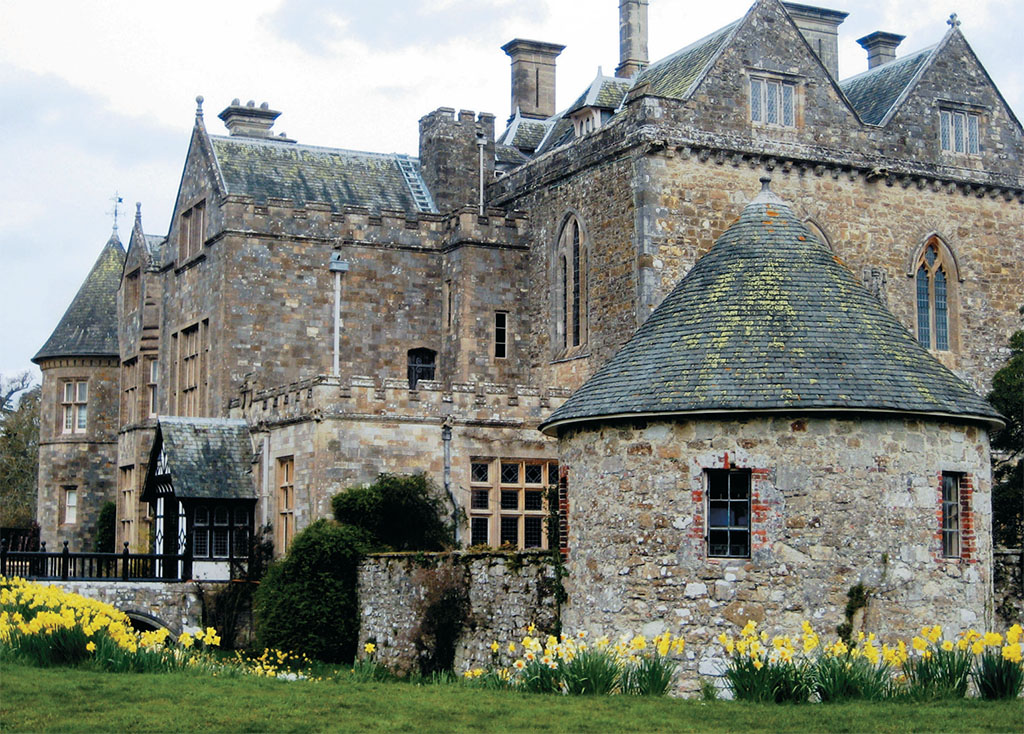
REBECCA GARDNER
[caption id="NewForestLife_img8" align="aligncenter" width="577"]
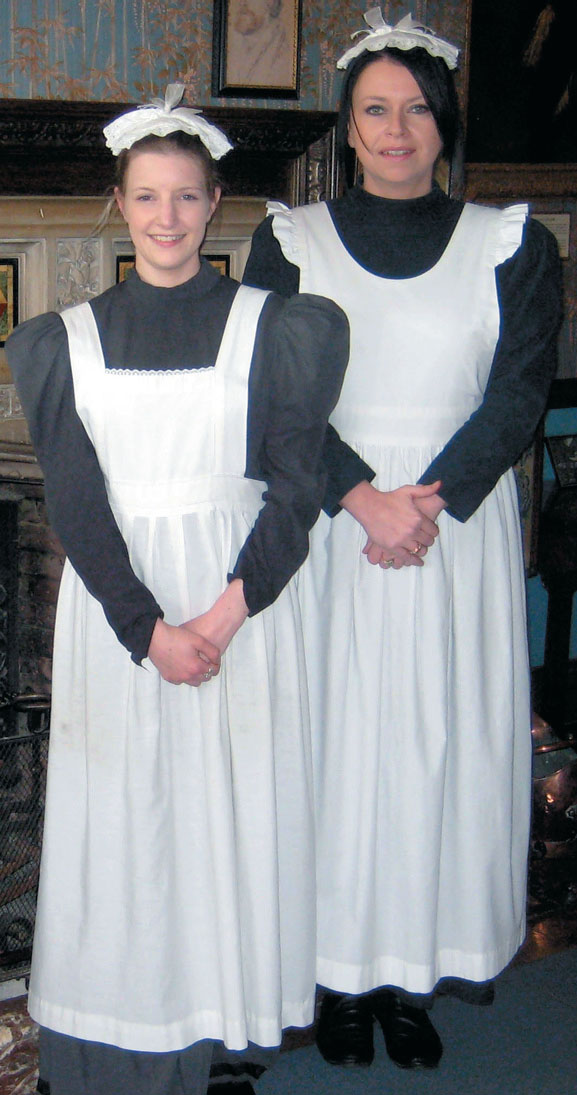
PHOTOLIBRARY
Highly recommended is Beaulieu’s “The Secret Army” exhibition. After Churchill declared that “ungentlemanly conduct” would be required to win the war, the Special Operations Executive (SOE) was set up, teaching sabotage and subversion for undercover operations in occupied Europe. Each New Forest grand house taught a different skill, from living off the land to forgery. Beaulieu itself was known as “the finishing school” and S.O.E. sometimes known as the ‘Stately ‘Omes of England’.
Defending the realm dates back further than Beaulieu’s wartime experiences, however. Bucklers Hard, a pleasant riverside walk from Beaulieu, is a reconstruction of 18th-century shipbuilding life, in a village famous for constructing Nelson’s warships. Many cottage interiors show the life of the community that lived there, including men who fought at the Battle of Trafalgar. The village entry fee includes several museums, restaurants and opportunities for boat trips.
Just a few miles away is the Beaulieu Hotel, one of four hotels in the New Forest Hotels group, sitting on a tranquil, open stretch of the forest. Across the road sits the Beaulieu Road Pony Sales yard; a maze of open wooden holding pens where forest ponies are sold. On sale days, the public can attend for free.
Adjacent to the hotel is The Drift Inn and just 50 yards beyond is the tiny Beaulieu Road train station. With direct trains available from Waterloo and the Beaulieu estate just minutes away by taxi, even non-drivers can visit easily.
To the north of Beaulieu, on the edge of Southampton Water, is a very rare building with another link to the sea. Eling Tidal Mill is one of the few tide-powered mills in the world that regularly produces flour. John Hurst, Senior Tidal Mill Assistant, has a passion for the building and the process. “The building was rebuilt in the 18th century, Hurst says, “but records of a mill here are in the Domesday book. It also stands on a Roman-built toll bridge.”
Ring ahead to check for daily milling times, as the schedule varies with the tides. Inside is a sensual feast with the warm smell of the flour and the noise of the millstones. Hurst monitors the process in his own way. “The vibrations through your feet tell you if the milling is going well,” he says. The Eling Creek tea rooms sell baked goods, using flour produced in the traditional way. Leaving the tiny building, you may want to get back in the open air, so head south for Exbury Gardens.
Lionel de Rothschild started this delightful woodland garden in 1919, his passion for rhododendrons and azaleas leading him to build an irrigation system and water tower. Each season at Exbury has its own highlights, from the camellia walk in early spring to the glorious fall foliage. Head Gardener, John Anderson, picks one of his favorite areas, “the daffodil meadow with boats on the Beaulieu River in the background.”
How to take it all in? Anderson suggests, “Contemplating walking around 20 acres with 20 miles of paths may be a lot for some people, so try our buggy tours.” Another option is a ride on Exbury’s small steam railway, passing woodland areas not visible from the footpaths.
To finish a New Forest visit, perhaps meander through a New Forest village. After a walk around the pathways and bridges of Brockenhurst, consider staying overnight or just for dinner or afternoon tea. The Thatched Cottage, built in 1627, can offer a meal as well as one of its five rooms, each decorated with eclectic detail. Alternatively, The Cloud Hotel is a large hotel with beautiful views over the common, and wandering cattle beneath the oak trees.
It is the animals wandering past house and home that gives such an unusual feel to this corner of Hampshire, but it is also a place created and respected by its people. Take time to talk to the miller, the commoner or the housemaid and enjoy discovering more about their New Forest lives.





Comments